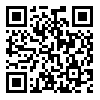Volume 1, Issue 2 (3-2021)
2021, 1(2): 31-47 |
Back to browse issues page
Download citation:
BibTeX | RIS | EndNote | Medlars | ProCite | Reference Manager | RefWorks
Send citation to:



BibTeX | RIS | EndNote | Medlars | ProCite | Reference Manager | RefWorks
Send citation to:
Karimzadeh M, Nafar F, Nafar Z. (2021). Investigating the Relationship between Children's Personality Traits and Parenting Styles of Parents through Symbolic Family Drawings of Preschool Children in Tehran Province. Journal of Childhood Health and Education. 1(2), 31-47.
URL: http://jeche.ir/article-1-31-en.html
URL: http://jeche.ir/article-1-31-en.html
1- Associate Professor, Faculty of Educational Sciences and Social Welfare, University of Rehabilitation Sciences and Social Health. Tehran, Iran.
2- Master of Family Counseling, Shahid Beheshti University. Tehran. Iran
3- PhD student in Educational Psychology. Allameh Tabatabaei University (RA). Tehran. Iran. (Corresponding author)
2- Master of Family Counseling, Shahid Beheshti University. Tehran. Iran
3- PhD student in Educational Psychology. Allameh Tabatabaei University (RA). Tehran. Iran. (Corresponding author)
Abstract: (2616 Views)
Introduction: Family as a first center of socialization for children has an important impact on development, especially on development of children's personality, in this regard, parenting styles are considered as an important factor in child development. Accordingly, children's painting is one of the methods of identifying mental health and personality development. The aim of the present study was to investigate the relationship between children's personality traits and parenting styles of parents through the symbolic meanings of family drawing of preschool children in Tehran province. Research Method: The statistical population of this study is all pre-school children in District 20 of Tehran province. A sample of 103 children was selected through cluster sampling. In this research, Baumrind's (1973) parenting styles questionnaire was completed and Kremen Family Drawing (1951) was used to analyze the coded meaning of children’s painting. To analyze the data, descriptive statistics (frequency, charts and tables) and inferential statistics (Test-2, Fisher test, and Follow-up tests) were used. Results: The research showed that there was a relationship between the dimensions of breadth, distance and matching the maturity with the parenting styles. Also, there was a significant difference between the families with authoritative parenting style and the families with permissive parenting style in the breadth index. There was a meaningful difference between families with authoritarian parenting style and those with permissive parenting style in the Parent Matching Responses of painting parents. There was a key difference between the families with authoritative parenting style and the families with authoritarian parenting style in painting distance responses. There is also a significant difference between the responses to painting distance between the families with authoritative parenting style and the families with permissive parenting style. Discussion: In sum, the findings of this study showed that children's drawings could reflect the anxieties and concerns of children who had grown with different parenting styles and these styles might play an important role in the development of children.
Type of Study: Research |
Subject:
General
Received: 2020/12/24 | Accepted: 2021/01/26 | Published: 2021/04/9
Received: 2020/12/24 | Accepted: 2021/01/26 | Published: 2021/04/9
| Rights and permissions | |
 |
This work is licensed under a Creative Commons Attribution-NonCommercial 4.0 International License. |


